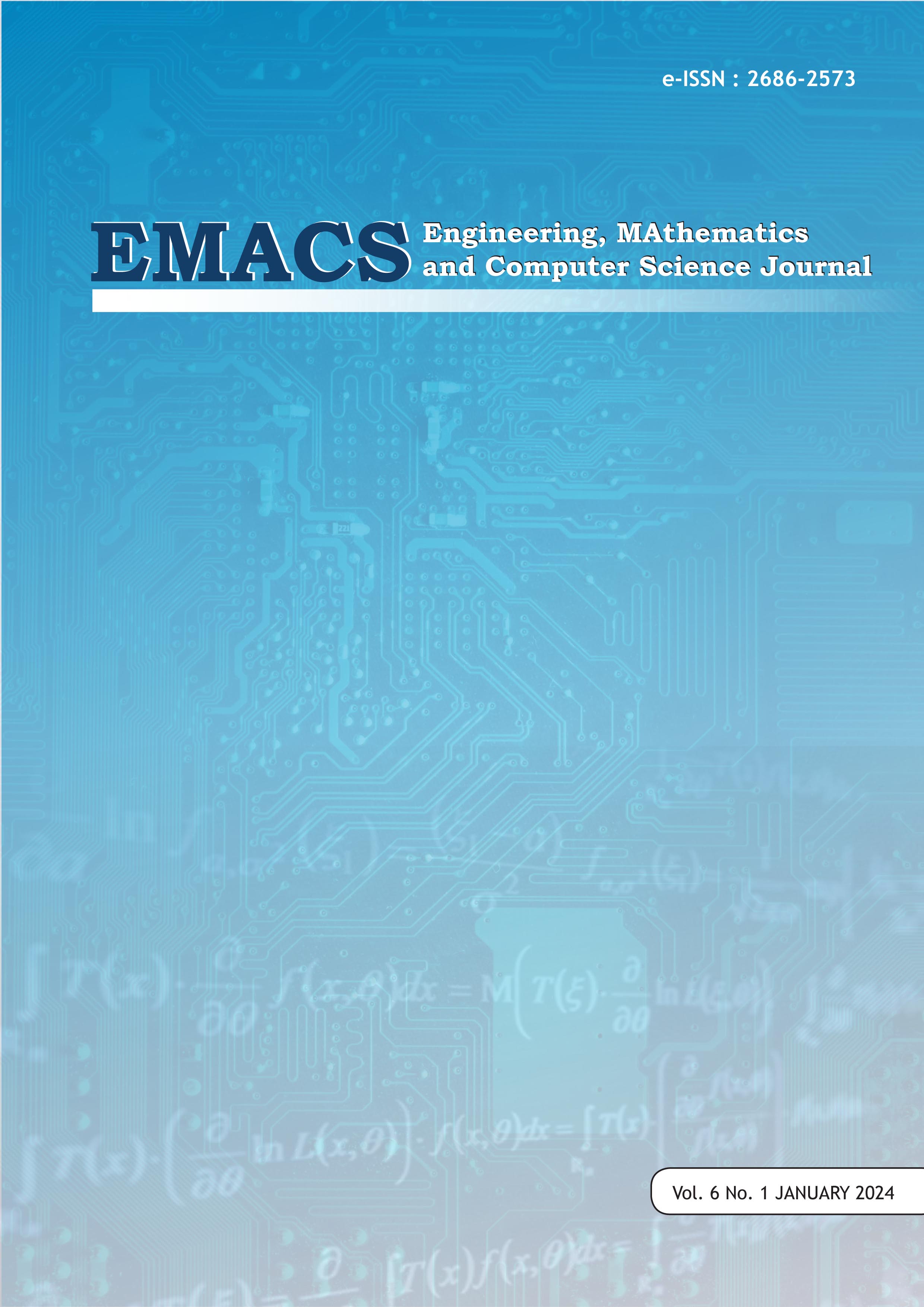Design of An Intelligent Tutoring System – Student Model: Predicting Learning Style
DOI:
https://doi.org/10.21512/emacsjournal.v6i1.10938Keywords:
Intelligent Tutoring System, Student Module, Mechine Learning, PredictionAbstract
Education is very important for everyone, not only for acquiring knowledge but also for improving quality of life and well-being. An Intelligent Tutoring System (ITS) is a computer system that can provide personalized and adaptive learning assistance and support to students. This system is designed to offer effective guidance to students based on their individual abilities and learning styles. ITS utilizes artificial intelligence (AI) technology to understand students' abilities and provide guidance tailored to their needs. Recently, there have been methods to predict learning styles, such as through questionnaires on the EducationPlanner website, but these determinations are often too general. This study aimed to predict the learning styles used by specific students for specific subjects. Researchers conducted this study at XYZ University to determine the learning styles of certain students or groups. With this information, instructional materials and methods can be uniquely designed to cater to the needs of these groups. Based on the evaluation results, the study found that the Logistic Regression model was the best, with a precision of 0.5653 and a hamming loss value of 0.3468. This research demonstrates that information from six selected subjects (English, Religion, Civics, Arts, Physics, and Geography) can be used to determine students' learning styles.
References
Berrar, D. (2018). Cross-validation. Encyclopedia of Bioinformatics and Computational Biology: ABC of Bioinformatics, 1–3(January 2018), 542–545. https://doi.org/10.1016/B978-0-12-809633-8.20349-X
Cantina, J. (2021). Students ’ Learning Styles : Basis for Module Development in Literature STUDENTS ’ LEARNING STYLES : BASIS FOR MODULE DEVELOPMENT IN LITERATURE. December 2016.
Fouad, K. M., Ismail, M. M., Azar, A. T., & Arafa, M. M. (2021). Advanced methods for missing values imputation based on similarity learning. PeerJ Computer Science, 7, 1–38. https://doi.org/10.7717/PEERJ-CS.619
Gunawan Tambunsaribu, & Yusniaty Galingging. (2021). Masalah Yang Dihadapi Pelajar Bahasa Inggris Dalam Memahami Pelajaran Bahasa Inggris. Dialektika: Jurnal Bahasa, Sastra Dan Budaya, 8(1), 30–41. https://doi.org/10.33541/dia.v8i1.3110
Kementerian Riset, Teknologi, dan P. (2015). Standar Nasional Pendidikan Tinggi (SN Dikti). Produk Hukum, 49, 21–23.
Man Singh Basnet, P., Mahtab, S., & Jin, A. (2023). A comprehensive review of intelligent machine learning based predicting methods in long-term and short-term rock burst prediction. Tunnelling and Underground Space Technology, 142(September), 105434. https://doi.org/10.1016/j.tust.2023.105434
Marouf, A. M., & Abu-naser, S. S. (2019). Intelligent Tutoring System for Teaching Computer Science I in Al-Azhar University , Gaza. International Journal of Academic and Applied Research (IJAAR), 3(3), 31–53. https://papers.ssrn.com/sol3/papers.cfm?abstract_id=3368968
Melek, M., Karadeniz, T. K., & Melek, N. (2017). A novel simple method to select optimal k in k-nearest neighbor classifier. International Journal of Computer Science and Information Security (IJCSIS), 15(2), 464–469.
Morales-rodrÃguez, M. L., RamÃrez-saldivar, J. A., Hernández-ramÃrez, A., Sánchez-solÃs, J. P., & MartÃnez-flores, J. A. (n.d.). Architecture for an Intelligent Tutoring System that Considers Learning Styles. 47(2012), 37–47.
Schröer, C., Kruse, F., & Gómez, J. M. (2021). A systematic literature review on applying CRISP-DM process model. Procedia Computer Science, 181(2019), 526–534. https://doi.org/10.1016/j.procs.2021.01.199
Sein Minn. (2022). AI-assisted knowledge assessment techniques for adaptive learning environments. Computers and Education: Artificial Intelligence, 3(January), 100050. https://doi.org/10.1016/j.caeai.2022.100050
Wininger, S. R., Redifer, J. L., Norman, A. D., & Ryle, M. K. (2019). Prevalence of Learning Styles in Educational Psychology and Introduction to Education Textbooks: A Content Analysis. Psychology Learning and Teaching, 18(3), 221–243. https://doi.org/10.1177/1475725719830301
Woolf, B. P. (2009). Building Intelligent Interactive Tutors. In Building Intelligent Interactive Tutors. https://doi.org/10.1016/B978-0-12-373594-2.X0001-9
Yaseen, S., Chohan, B. I., Komal, W., Hussain, M., & Jamal, R. (2021). A Study of Learning Style Preferences and Challenges Faced by the Students in Virtual Education. International Journal of Innovation, Creativity and Change, 15(7), 46–68.
Yotta, E. G. (2023). Accommodating students’ learning styles differences in English language classroom. Heliyon, 9(6), e17497. https://doi.org/10.1016/j.heliyon.2023.e17497
Downloads
Published
How to Cite
Issue
Section
License
Copyright (c) 2024 Nubli Hawari, Tanty Oktavia

This work is licensed under a Creative Commons Attribution-ShareAlike 4.0 International License.
Authors who publish with this journal agree to the following terms:
- Authors retain copyright and grant the journal right of first publication with the work simultaneously licensed under a Creative Commons Attribution License - Share Alike that allows others to share the work with an acknowledgment of the work's authorship and initial publication in this journal.
- Authors are able to enter into separate, additional contractual arrangements for the non-exclusive distribution of the journal's published version of the work (e.g., post it to an institutional repository or publish it in a book), with an acknowledgment of its initial publication in this journal.
- Authors are permitted and encouraged to post their work online (e.g., in institutional repositories or on their website) prior to and during the submission process, as it can lead to productive exchanges, as well as earlier and greater citation of published work.
USER RIGHTS
All articles published Open Access will be immediately and permanently free for everyone to read and download. We are continuously working with our author communities to select the best choice of license options, currently being defined for this journal as follows: Creative Commons Attribution-Share Alike (CC BY-SA)





